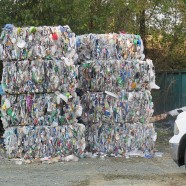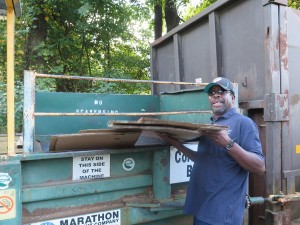

There are three types of recycling, each with their own pros and cons:
McIntire Recycling Center is a Source Separated Facility and because of this, it is able to maintain a 99% recycling rate.
- Plastic bags are taken to the Trex company in Winchester, VA.
- Metals are taken to Gerdau in Charlottesville, VA
- Glass is taken to Strategic Materials in Durham, NC
- Plastics 1-7 (bottles and containers), corrugated cardboard, mixed brown paper, phone books, and file stock are taken by Sonoco Recycling to several sites in Virginia
Source separation takes more effort on the part of the citizen, but the benefit is vast. With continued active participation by the community, Rivanna Solid Waste Authority can maintain a high recycling rate to ensure all materials brought to the Center end up at recycling facilities instead of in a landfill.
For more information:


